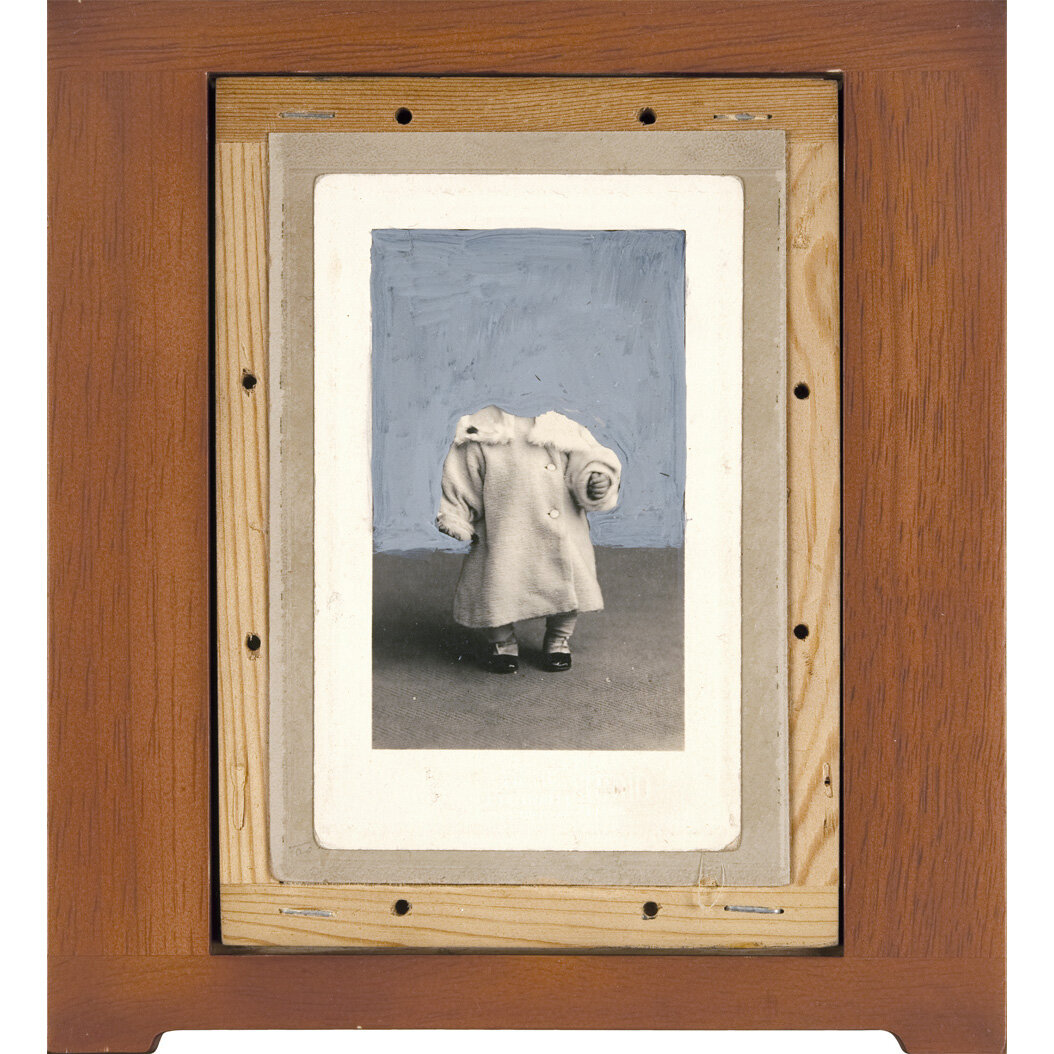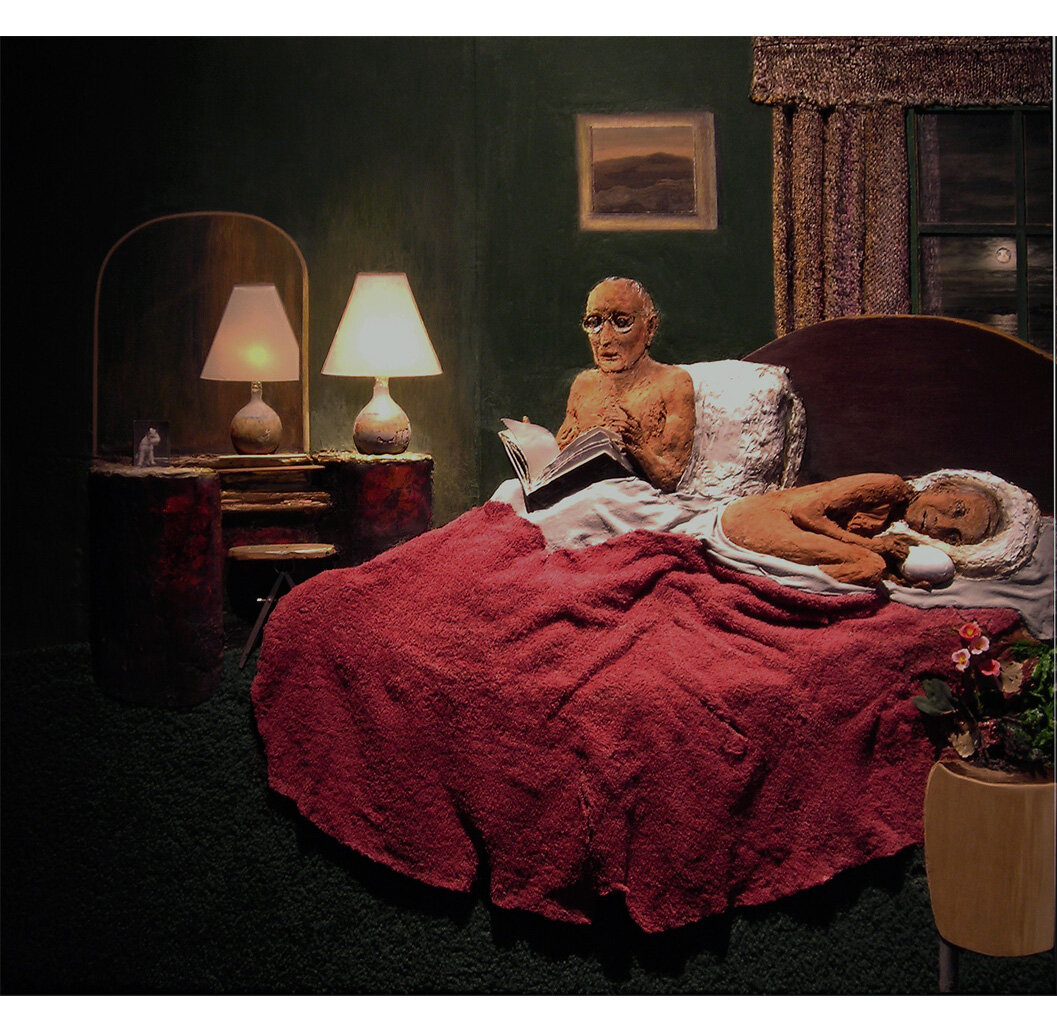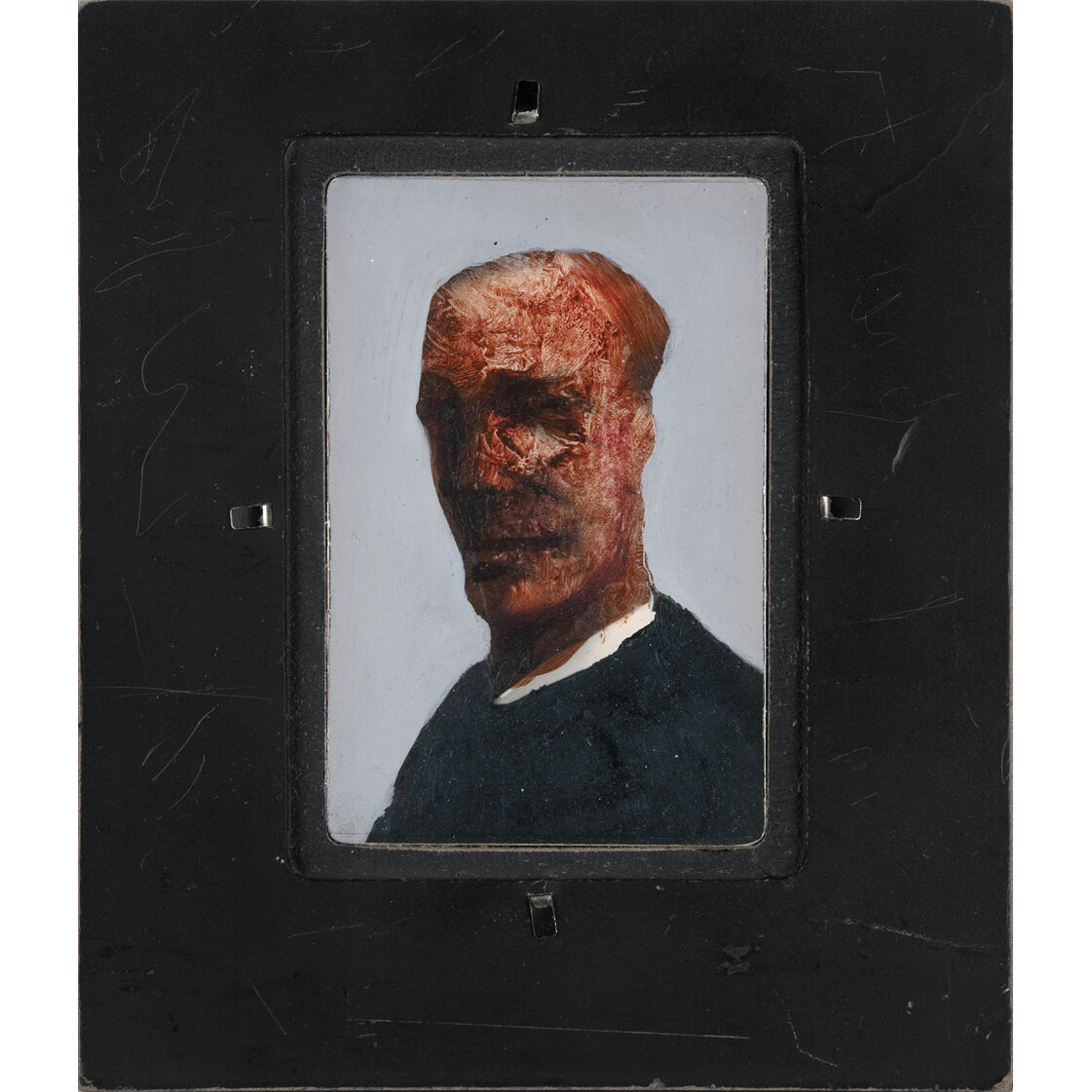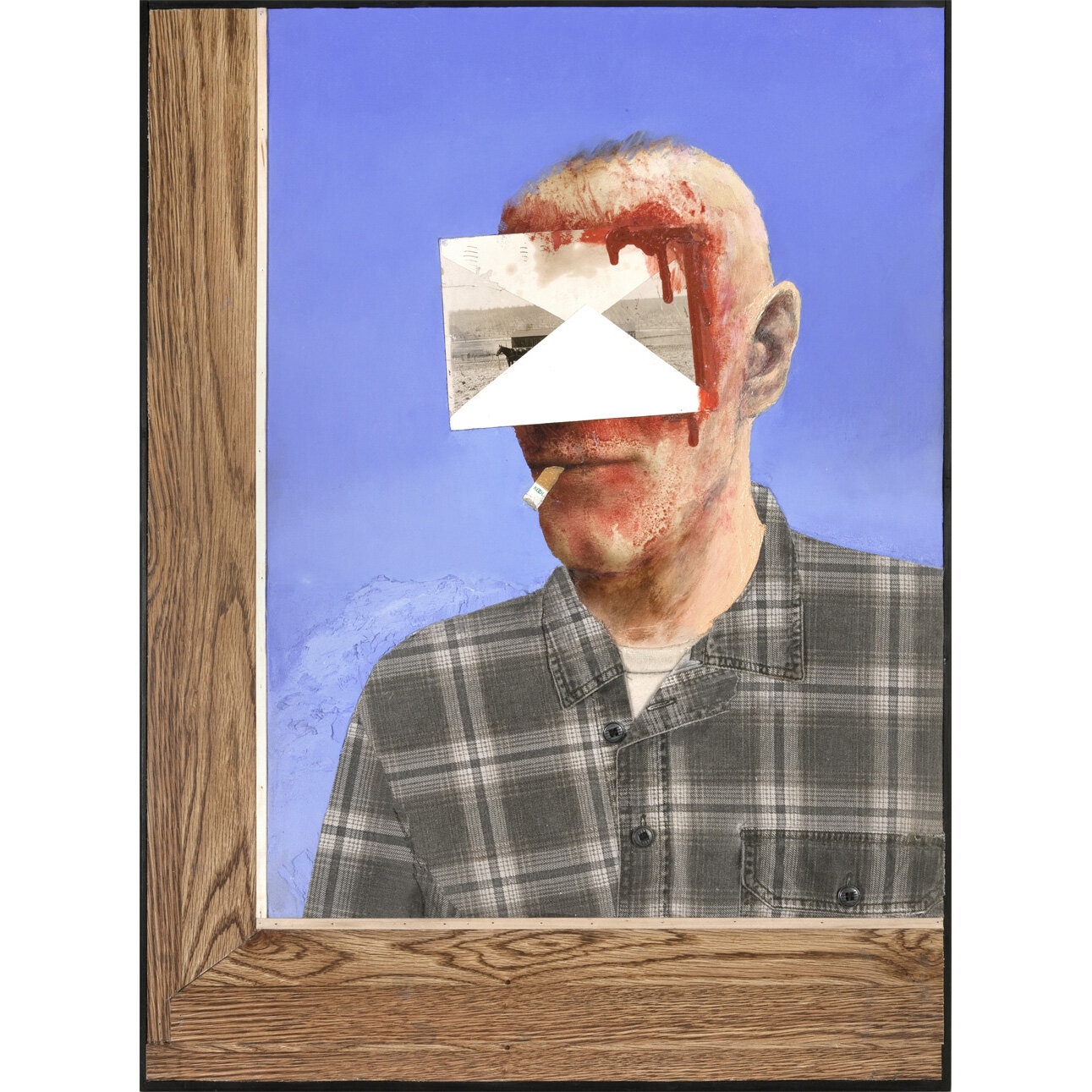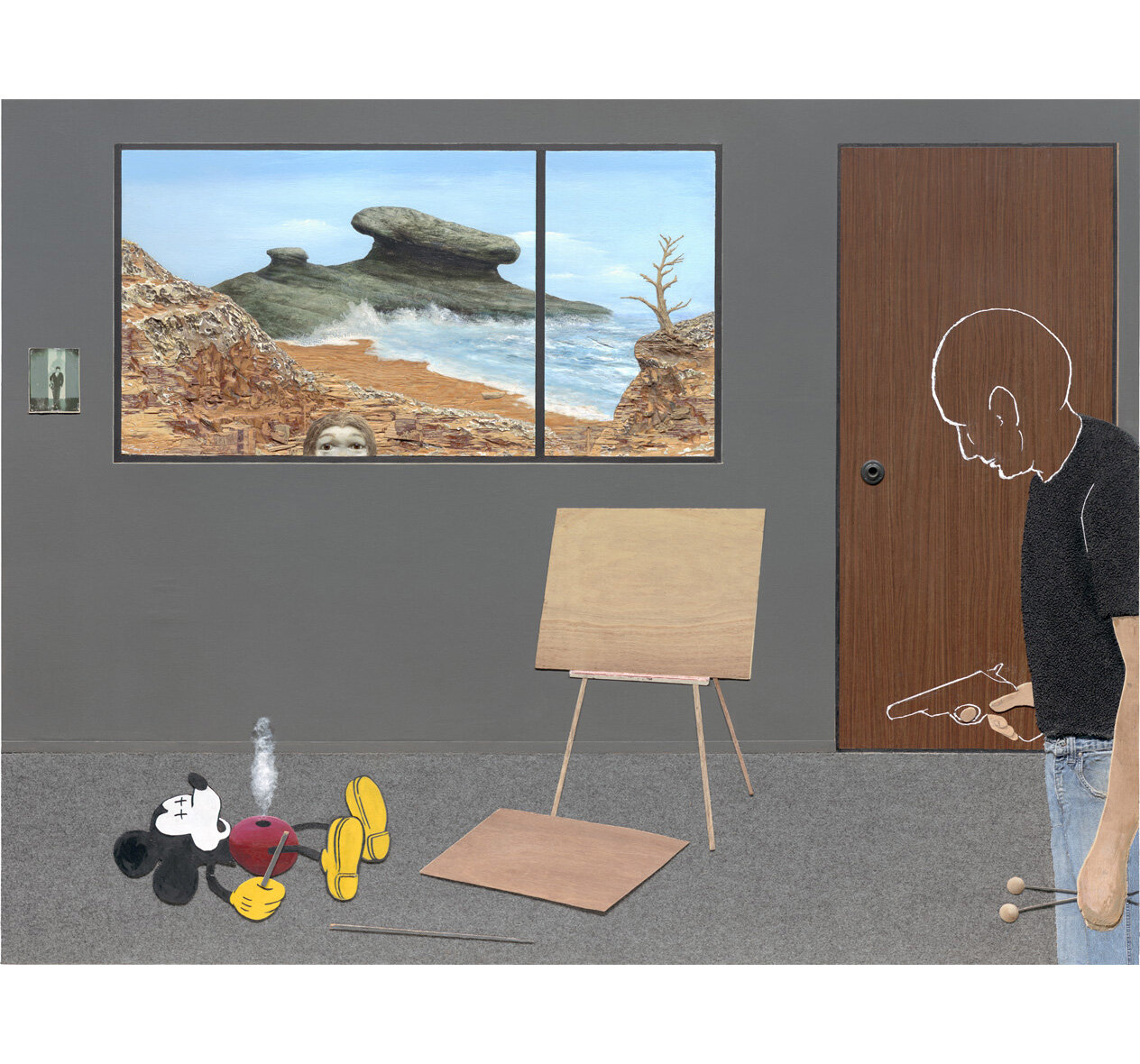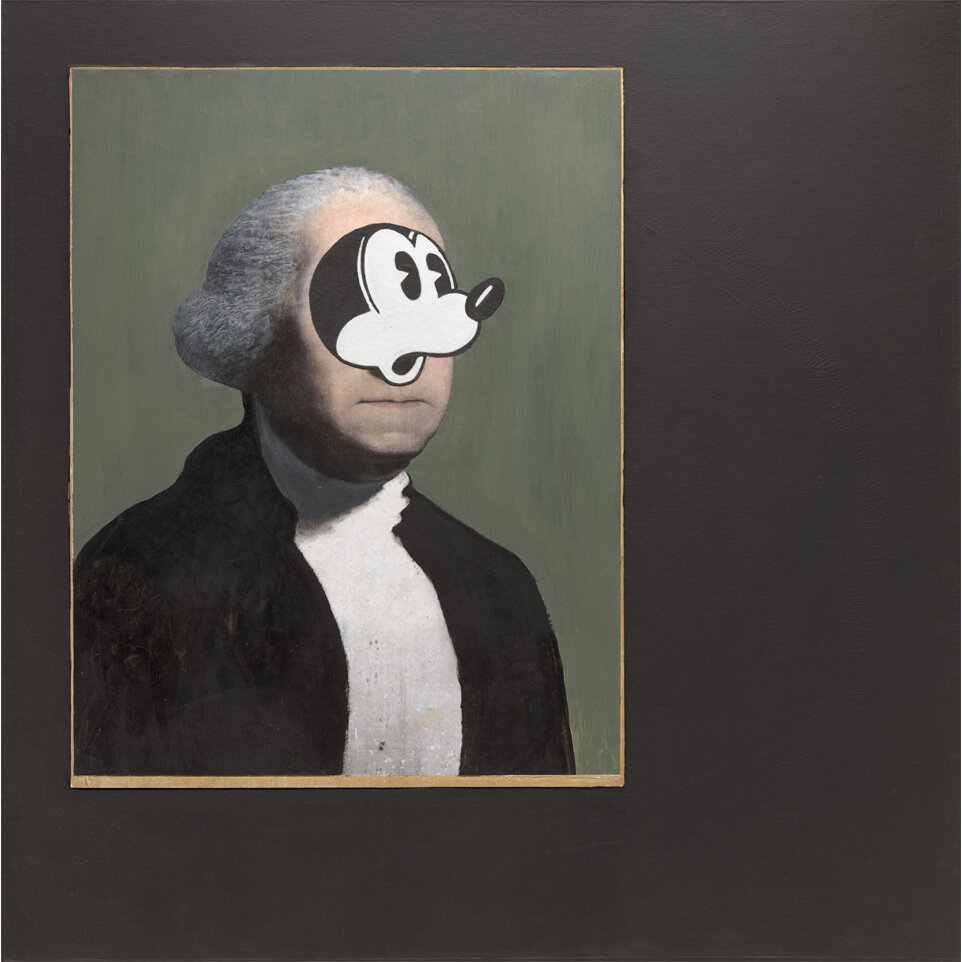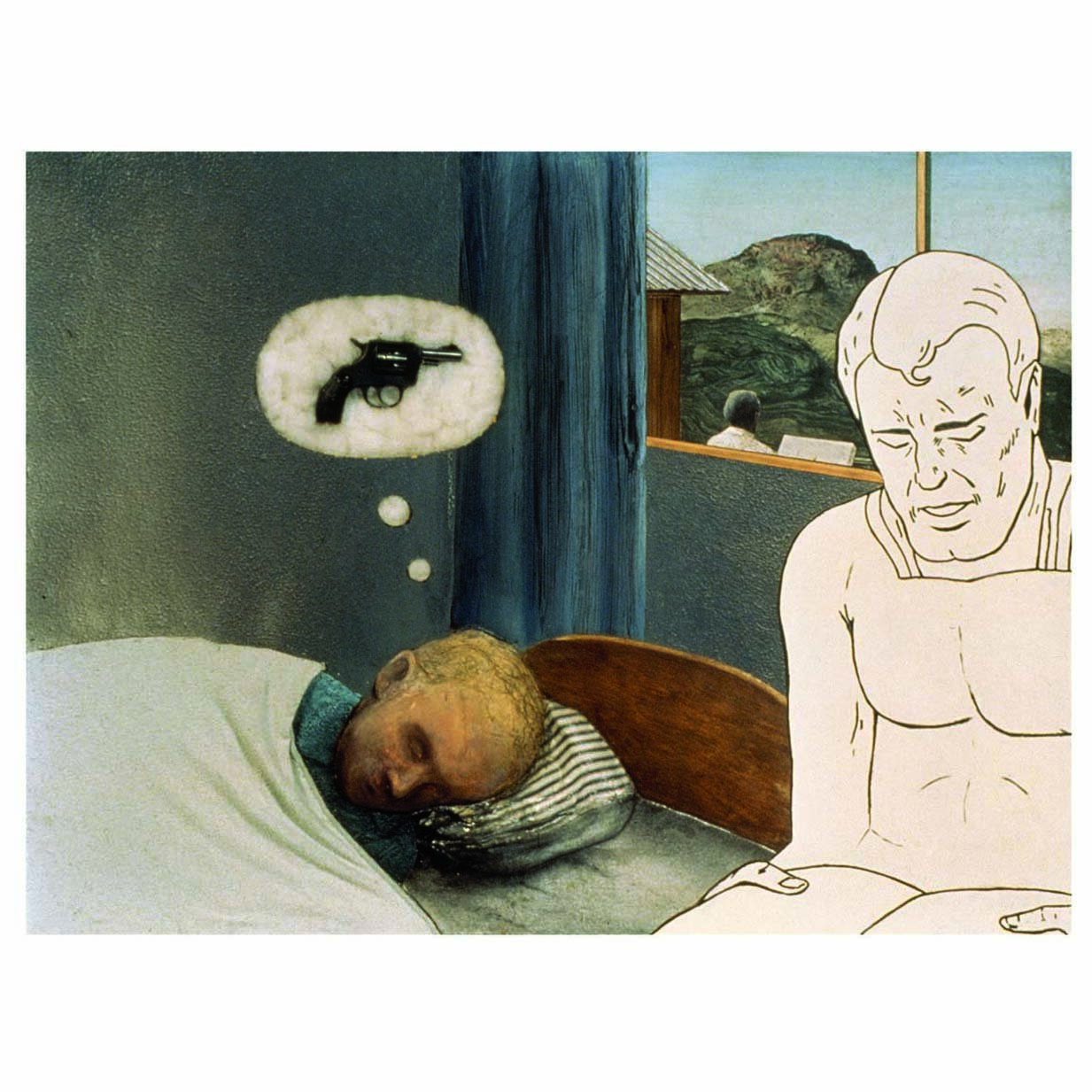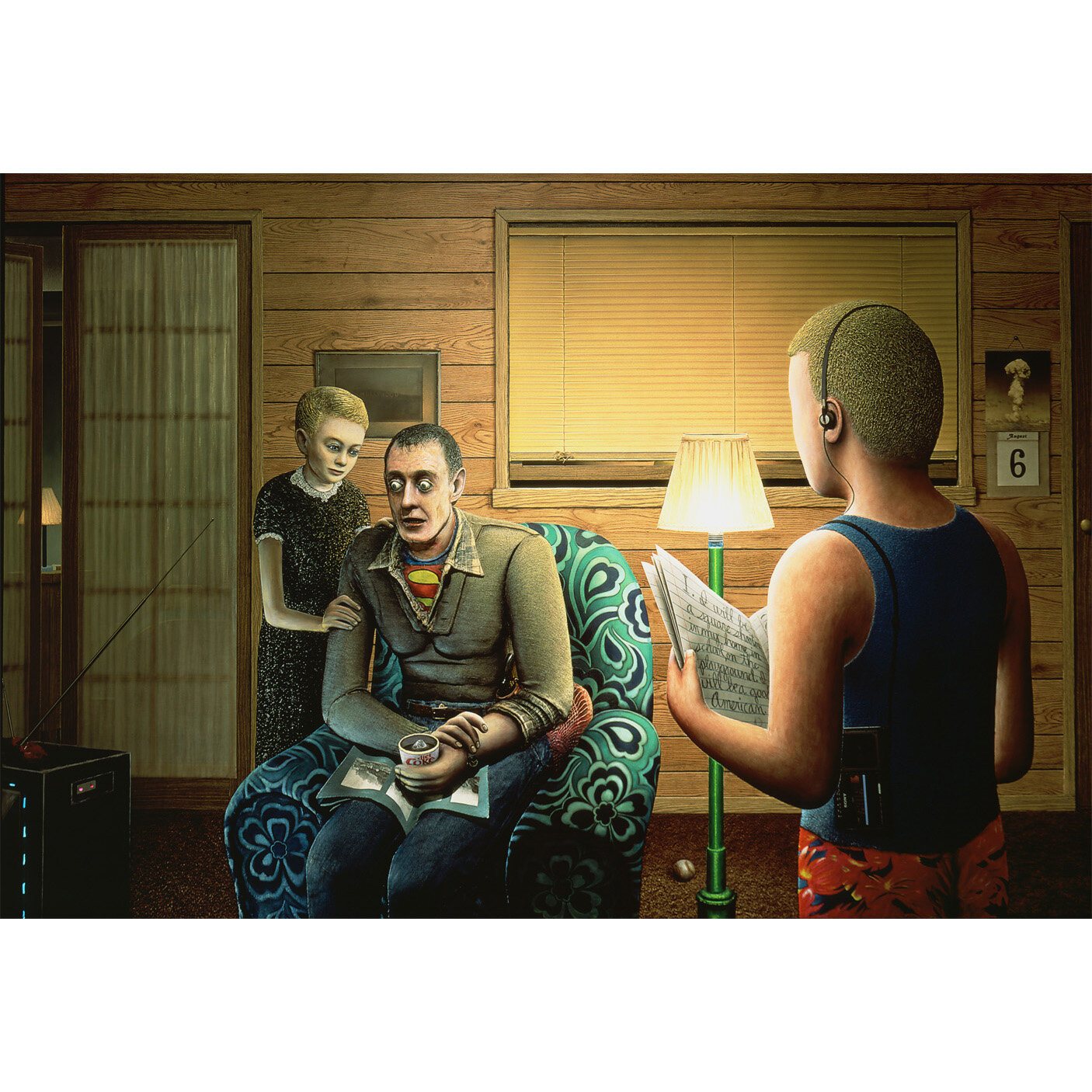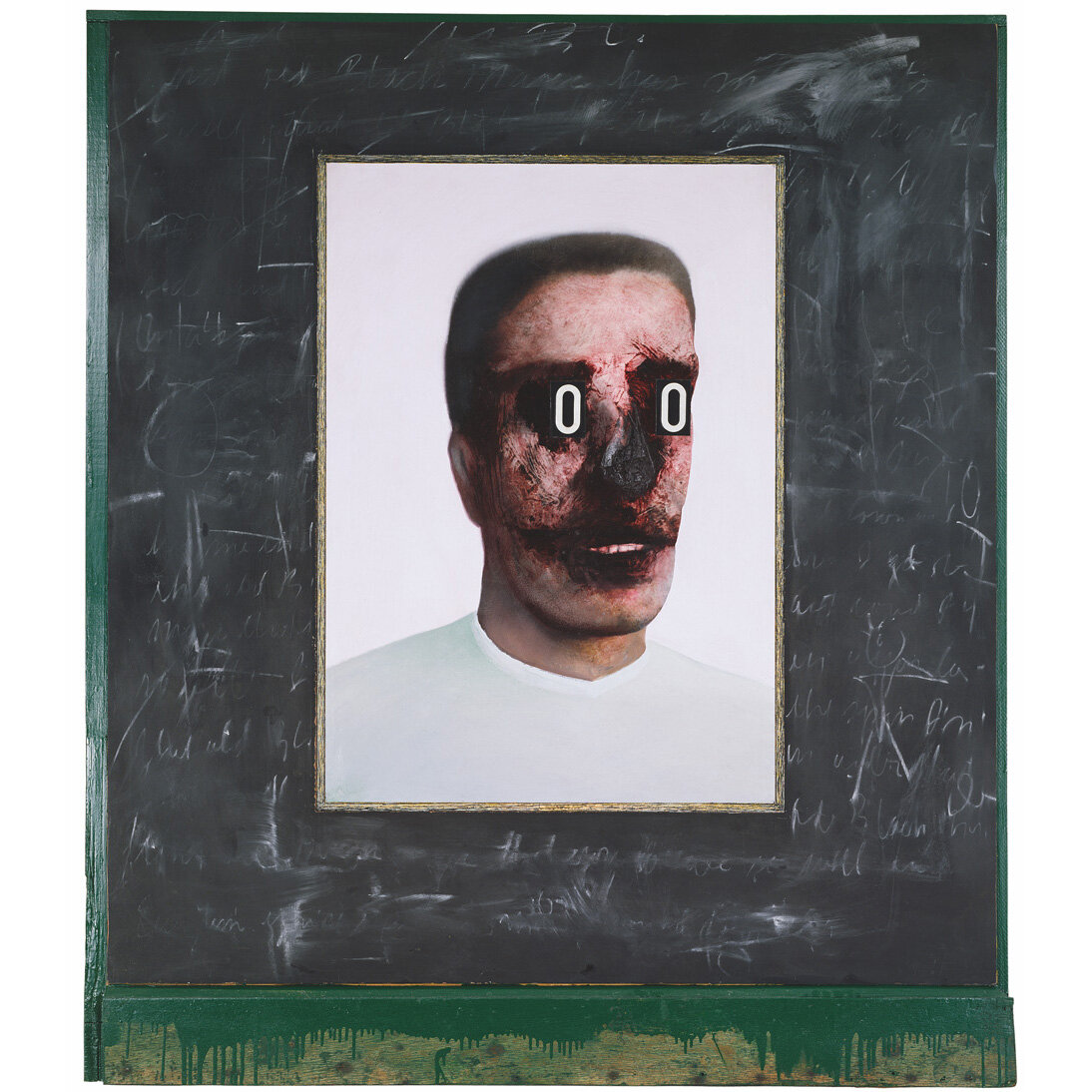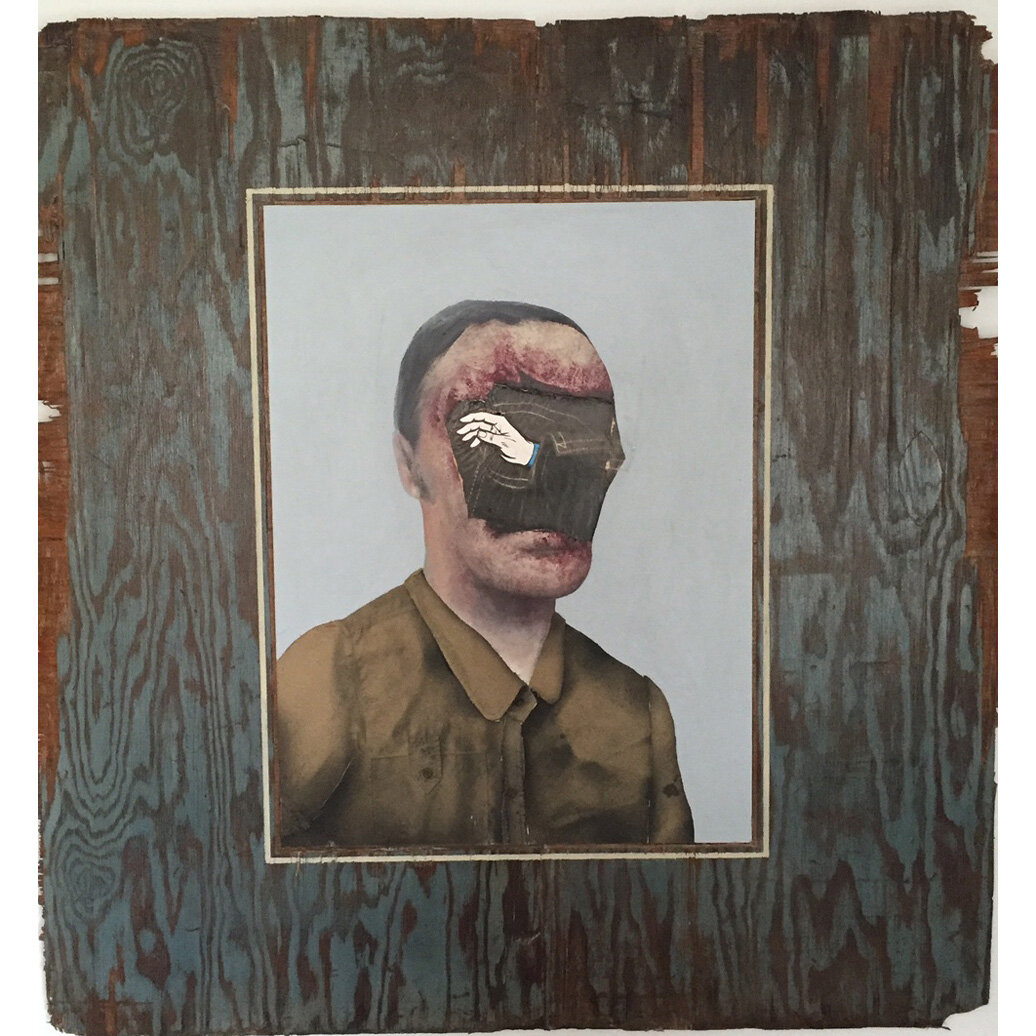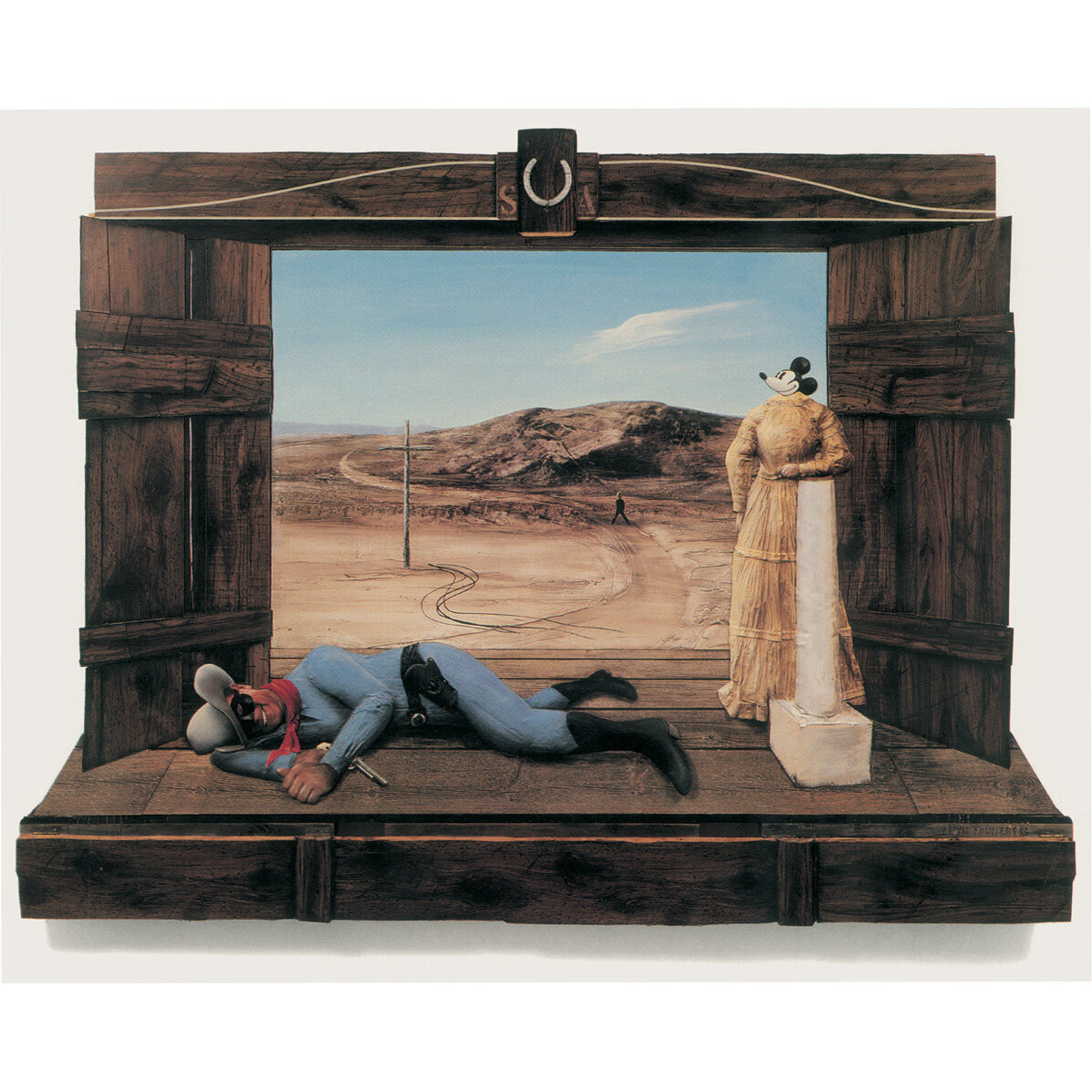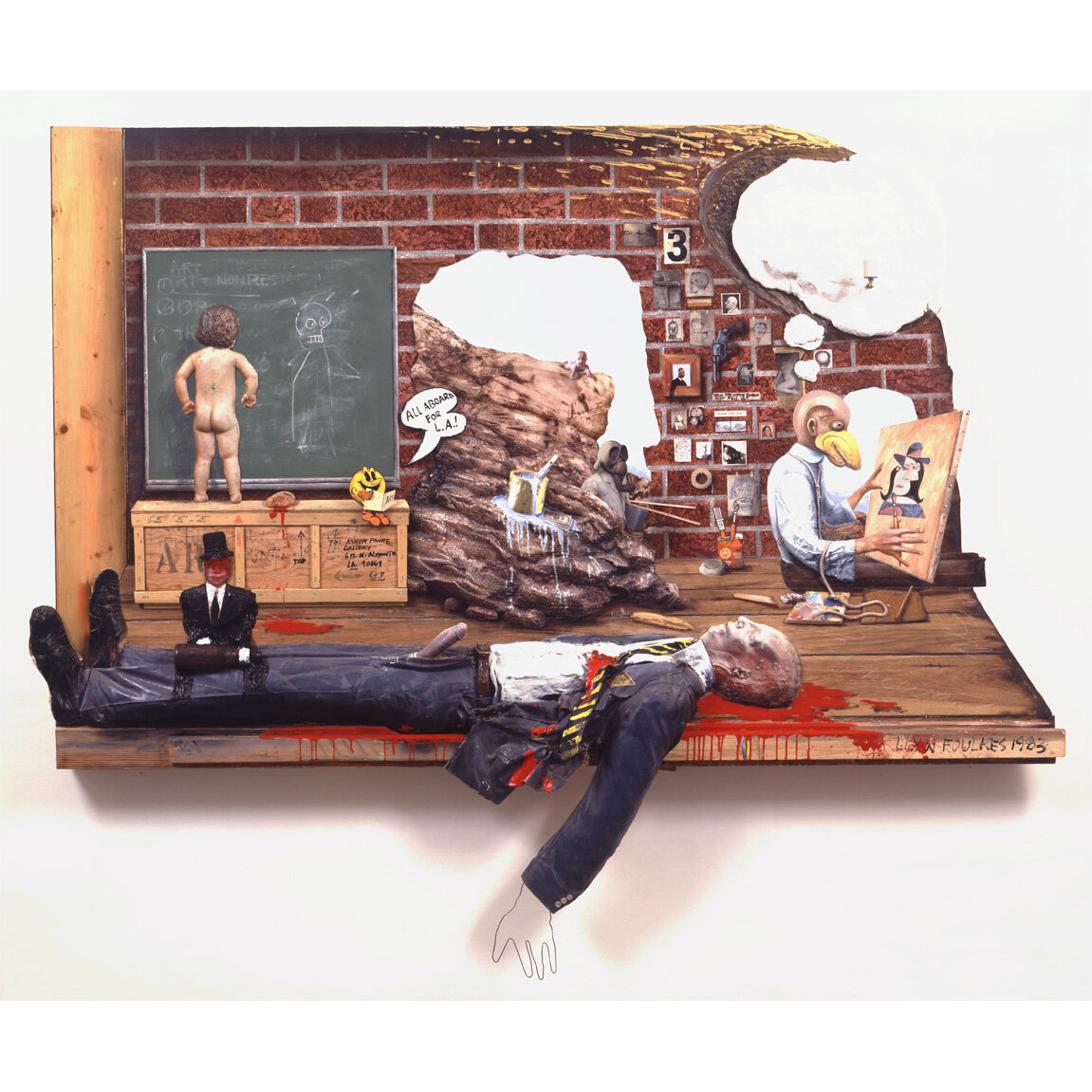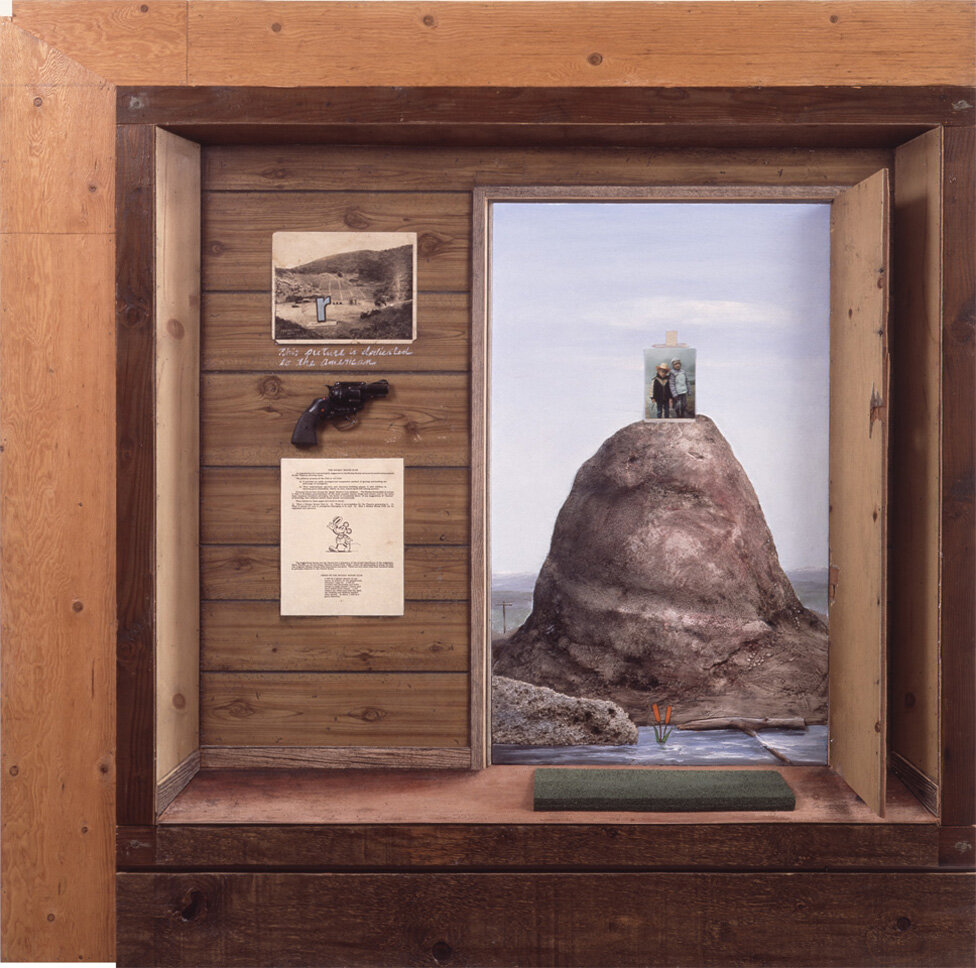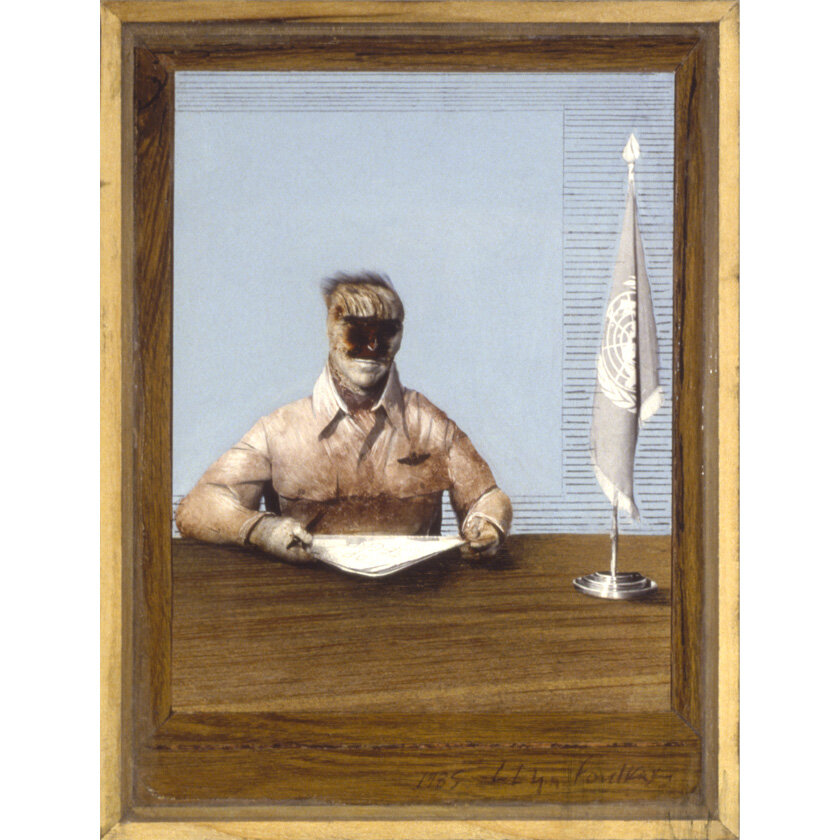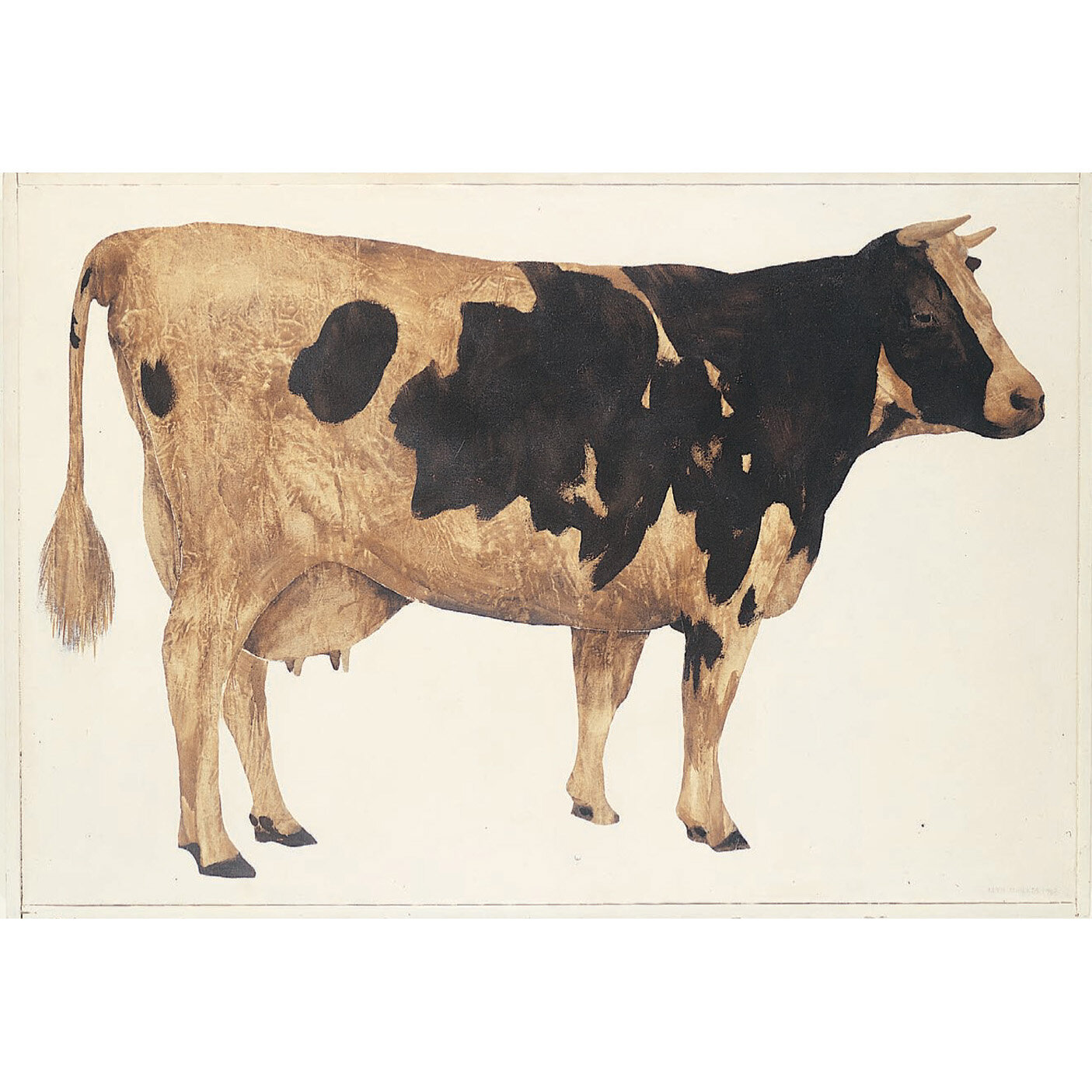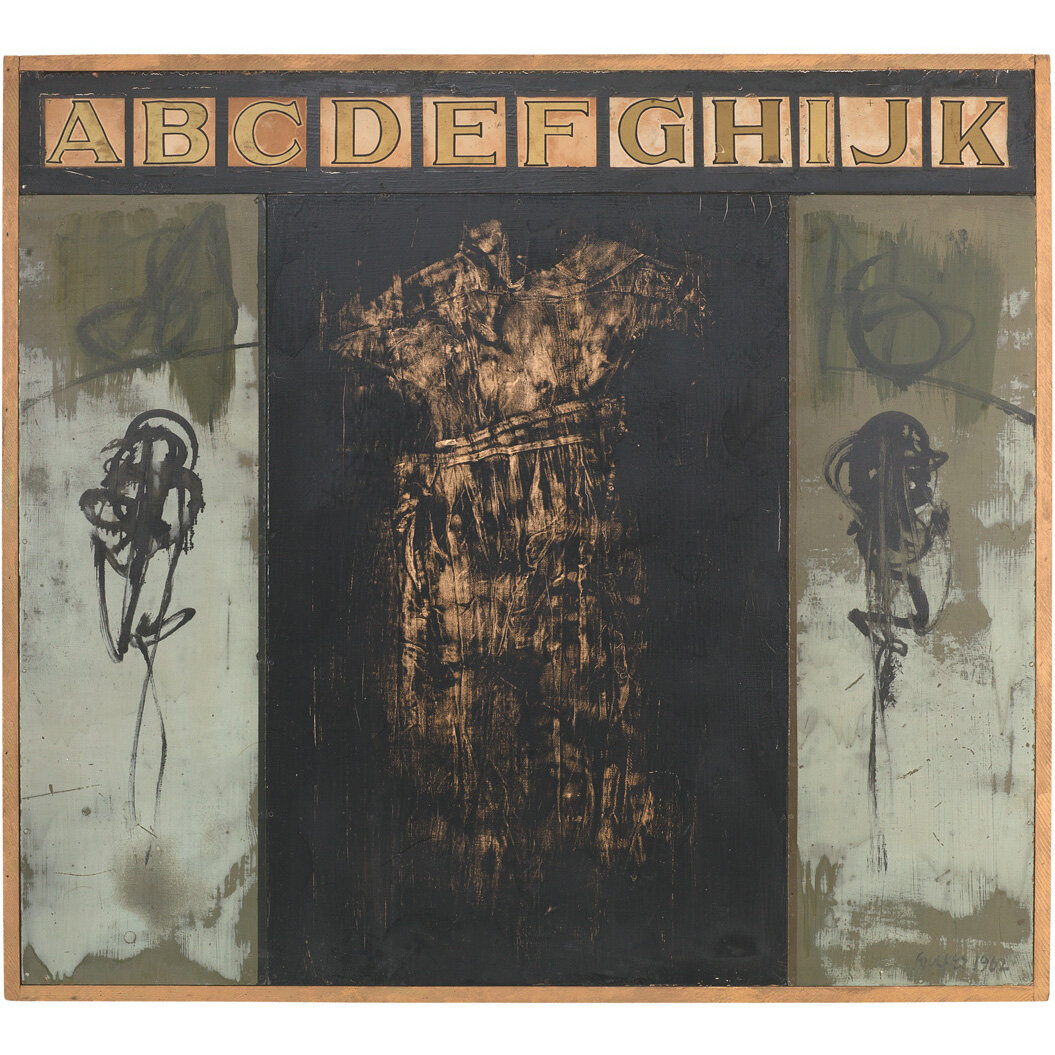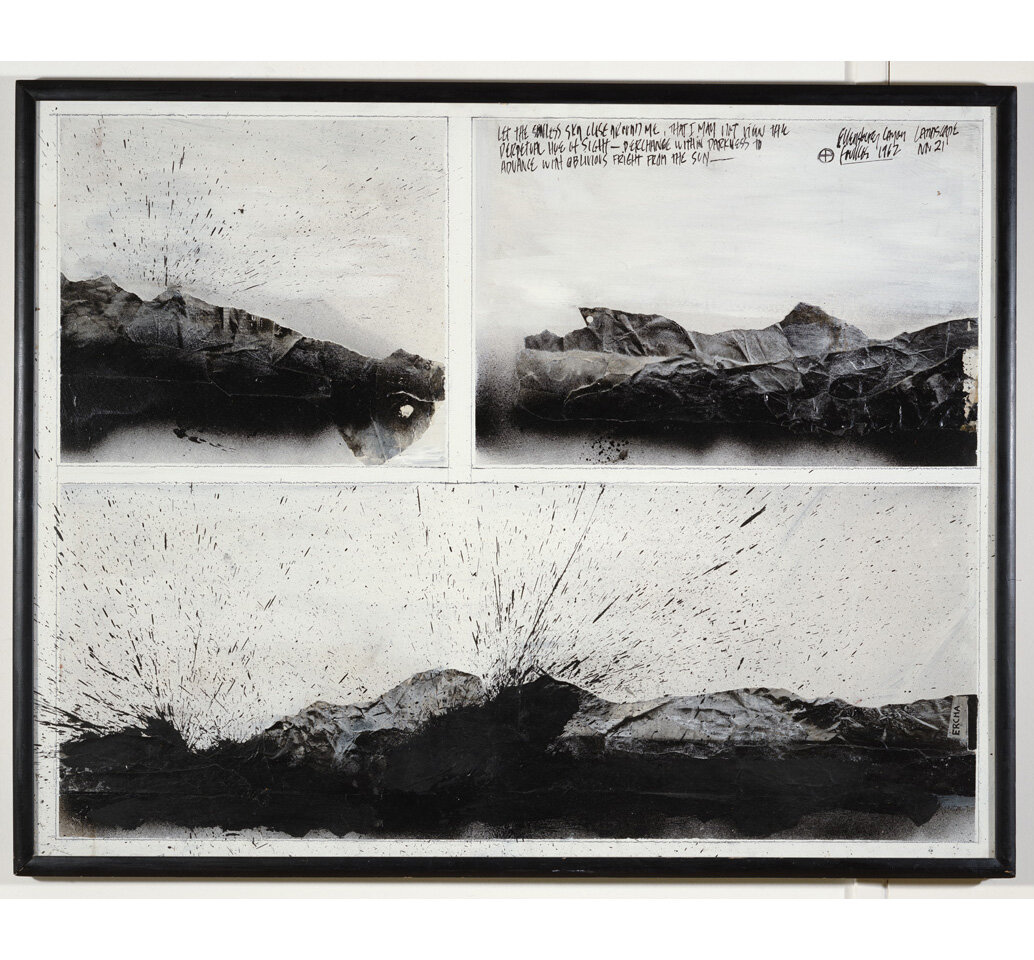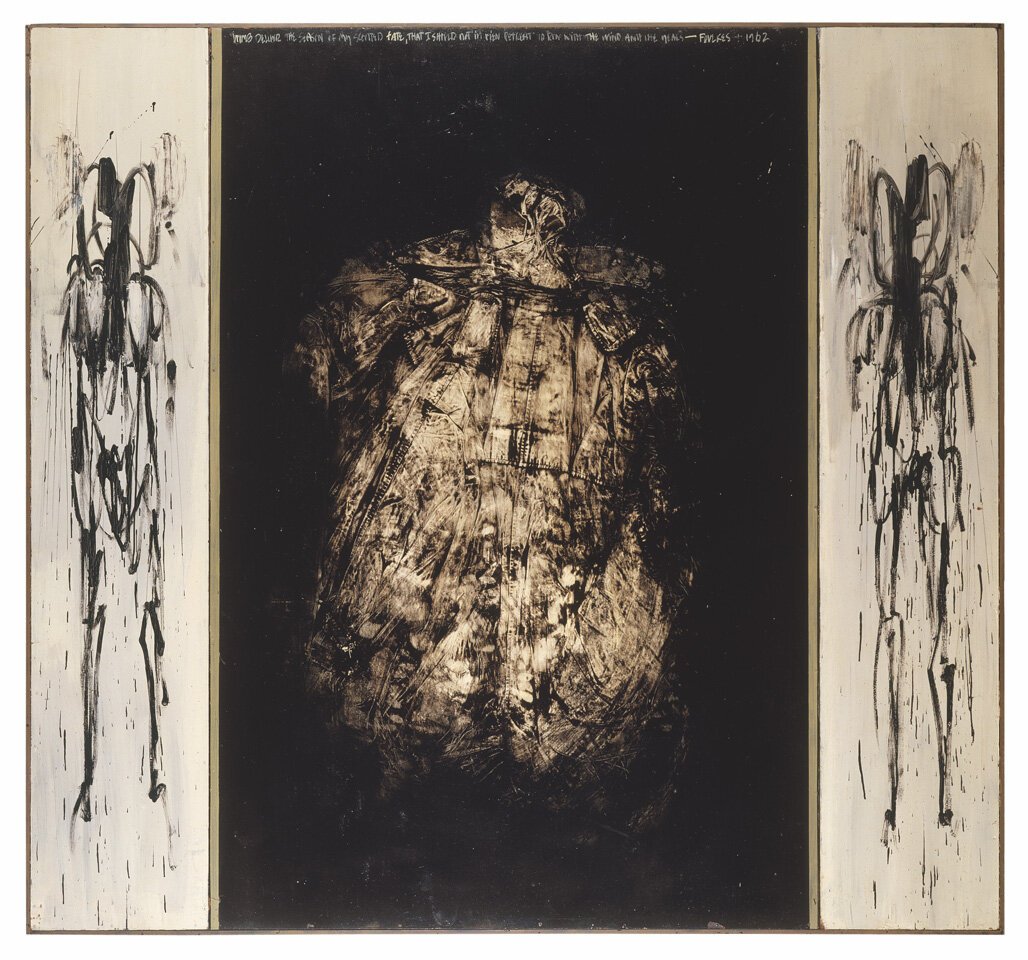Llyn Foulkes
Concurrent with completing his studies at Chouinard Art Institute (now CalArts), Foulkes began exhibiting with the Ferus Gallery (established in 1957 by Walter Hopps and Edward Kienholz) Los Angeles in 1959, with his first one-man exhibition there in 1961. Emotionally charged expressionism combined with assemblage quickly migrated to a pop response to the American landscape and the vanishing dreams of American opportunity that typified the optimistic growth of Los Angeles. By age 30, Foulkes had been given one person exhibitions at the Pasadena Art Museum (1962), the Oakland Art Museum (1964) and further gallery exhibitions with a new gallery across the street from Ferus (exhibiting Jess, Georgia O’Keefe, Irving Petlin, and others) named the Rolf Nelson Gallery (1963, 64) in a political move away from the finish fetish embraced by Ferus. By 1967, Foulkes had been awarded the Prize for Painting at the Paris Biennale, Musee d’Art Moderne de la Ville de Paris followed by a European exhibition there. The Los Angeles County Museum of Art would be the first museum to acquire his work for the collection in 1964 as the original building was still under construction. Demetrion would select Llyn Foulkes to represent the United States in the IX Sao Paulo Bienal, Museu de Arte Moderna, Brazil also in 1967.
Through the late sixties into the seventies, Foulkes would create trademark landscape paintings that utilized the iconography of postcards, vintage landscape photography, and Route 66 inspired hazard signs transformed into sly symbols of the broken promise of freedom once embedded in the American fantasy of the open road. This period resulted in his first retrospective organized by the Newport Harbor Art Museum (1974). Music also became a major catalyst in Foulkes work at this time, playing drums with City Lights (1965-1971), followed by his own band named The Rubber Band (1973-1977). By 1979, Foulkes returned to a childhood interest in one-man bands, and he still performs with The Machine regularly on the West Coast having just released a new CD-rom of original compositions entitled Llyn Foulkes and His Machine: Live at the Church of Art.
Since the early 80’s, Foulkes has turned to working on a series of tableaus beginning with O’Pablo (1983), and breakthrough work entitled POP (1986-1990), now in the collection of the Museum of Contemporary Art, Los Angeles. Utilizing fragments of real clothing, real upholstery all conjoined with the painted surface, the painting was a a summation of 30 years of artistic exploration, a summary, a masterpiece, and the new standard for Foulkes. POP, along with a new group of paintings selected by Paul Shimmel for his seminal Helter Skelter exhibition of 1992 propelled Foulkes to new levels of recognition. In his late fifties at the time, his energy, his commitment to continual advancement of painterly possibilities embracing an obsessive compulsive commitment, has lead Foulkes into what can easily be read as a Post-Pop Era. The most recent large scale projects are The Lost Frontier (1997-2004) and Deliverance (2004-2007). Foulkes, at age 73, continues to play with The Machine and paint in Southern Los Angeles. Following his inclusion in documenta 13 curated by Carolyn Christov-Bakargiev, Llyn was the subject of a comprehensive retrospective organized by the Hammer Museum, Los Angeles curated by Ali Subotnick. The exhibition traveled to New York and subsequently to Germany.

